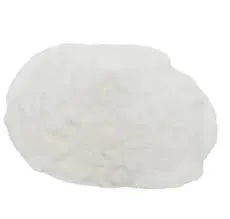
Nov . 23, 2024 01:45 Back to list
hpmc chemical structure
Understanding HPMC Chemical Structure and Applications
Hydroxypropyl methylcellulose (HPMC) is an important non-ionic, water-soluble polymer derived from cellulose, which is the structural component of the cell wall in plants. HPMC is synthesized through the chemical modification of natural cellulose by introducing hydroxypropyl and methoxy groups, which significantly enhance its solubility and functionality. This article explores the chemical structure of HPMC, its properties, and various industrial applications.
Chemical Structure of HPMC
The backbone of HPMC consists of a linear chain of anhydroglucose units, similar to that of cellulose. However, during the modification process, hydroxyl (–OH) groups in the cellulose structure are partially substituted with hydroxypropyl (–OCH2CHOH) and methoxy (–OCH3) groups. The degree of substitution, which refers to the average number of hydroxyl groups replaced per anhydroglucose unit, is a critical factor that influences the solubility and viscosity of HPMC.
HPMC exhibits varying molecular weights and substitution degrees, which leads to different properties. Typically, the range of substitution for methoxy groups is between 19% to 30%, while hydroxypropyl substitutions can range from 5% to 12%. The resulting compound demonstrates unique characteristics, such as increased solubility in water, which is crucial for a wide range of applications.
Properties of HPMC
The physical and chemical properties of HPMC make it a highly versatile compound. Being non-ionic, HPMC is resistant to ionic interactions, which makes it suitable for use in various applications where ionic content may be undesirable. HPMC forms clear, viscous solutions when dissolved in water, and its viscosity can be tailored to meet specific needs by adjusting the molecular weight and degree of substitution. Furthermore, it is thermostable and does not gel or precipitate upon heating or cooling, which is advantageous in many industrial processes.
Another vital property is its film-forming ability. HPMC can create flexible and transparent films, which is particularly valuable in the pharmaceutical and food industries. Moreover, the polymer also acts as a stabilizer, emulsifier, and thickening agent.
hpmc chemical structure

Applications of HPMC
HPMC finds utilization across several sectors, including pharmaceuticals, food, cosmetics, and construction. In the pharmaceutical industry, it serves as a binder in tablet formulations, ensuring proper cohesion of the ingredients. Additionally, HPMC is used in controlled-release drug formulations due to its gel-forming properties, allowing for the gradual release of active ingredients.
In the food industry, HPMC acts as a thickening agent and stabilizer in various food products, enhancing texture and consistency. It is commonly found in ice creams, sauces, and dressings, providing desired mouthfeel and preventing ingredient separation.
Cosmetically, HPMC is an excellent ingredient in lotions and creams, where it boosts viscosity and improves the stability of emulsions. It also serves as a film-forming agent in the formulation of hair gels and styling products.
Lastly, in the construction sector, HPMC is employed as a crucial additive in tile adhesives, gypsum products, and mortars. Its water retention properties help improve workability and adhesion in construction materials.
Conclusion
In summary, hydroxypropyl methylcellulose is a versatile polymer with a unique chemical structure that offers a wide array of functionalities across various industries. Its excellent solubilizing, film-forming, and thickening properties make it an invaluable ingredient in pharmaceuticals, food, cosmetics, and construction. As industries continue to innovate, the demand for HPMC is likely to grow, highlighting its importance in modern applications.
-
Versatile Hpmc Uses in Different Industries
NewsJun.19,2025
-
Redispersible Powder's Role in Enhancing Durability of Construction Products
NewsJun.19,2025
-
Hydroxyethyl Cellulose Applications Driving Green Industrial Processes
NewsJun.19,2025
-
Exploring Different Redispersible Polymer Powder
NewsJun.19,2025
-
Choosing the Right Mortar Bonding Agent
NewsJun.19,2025
-
Applications and Significance of China Hpmc in Modern Industries
NewsJun.19,2025







